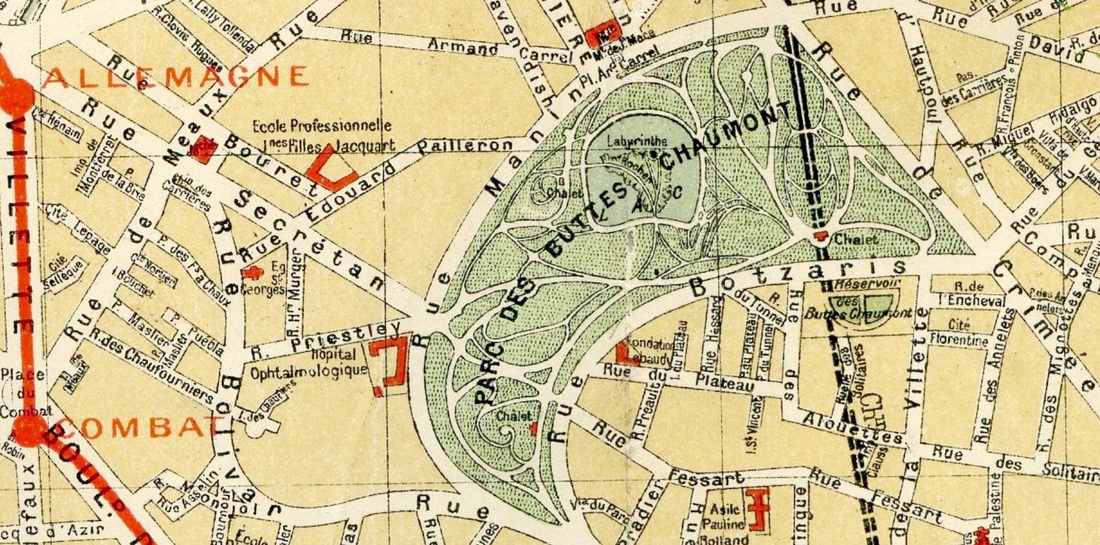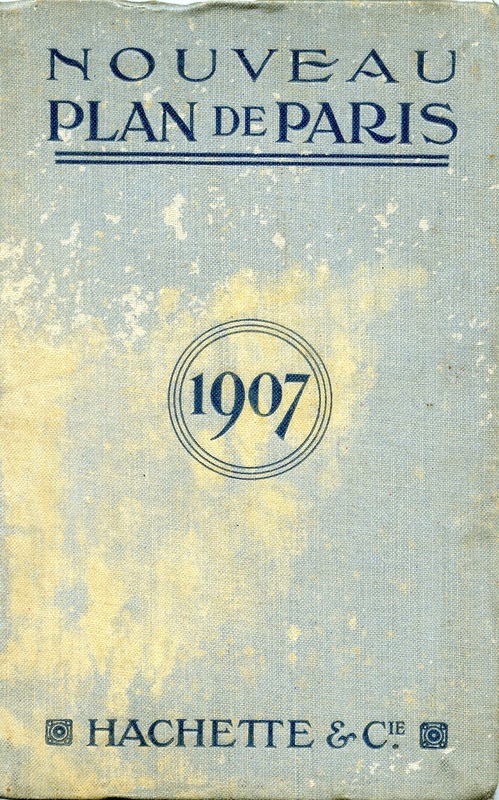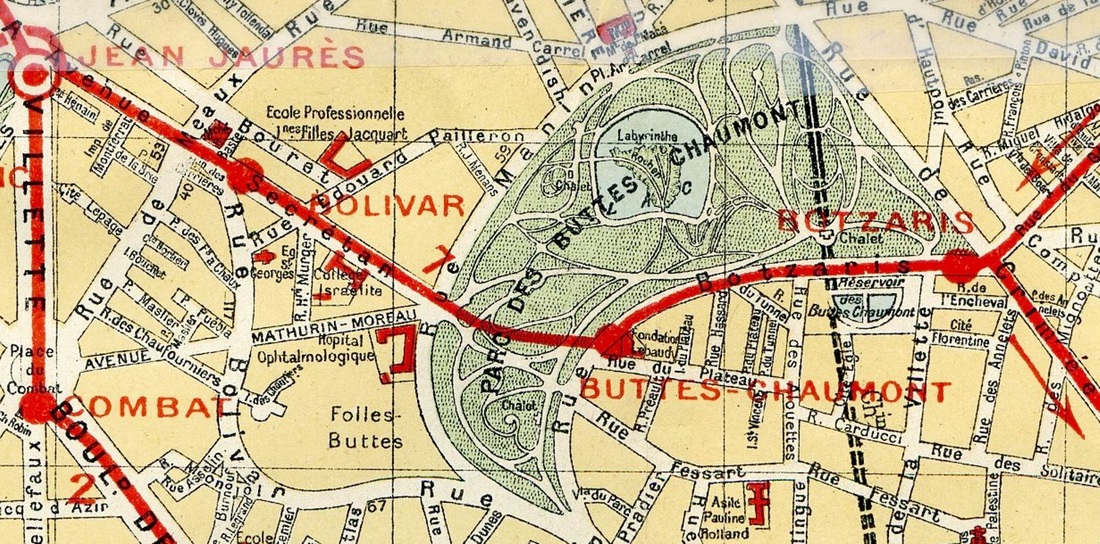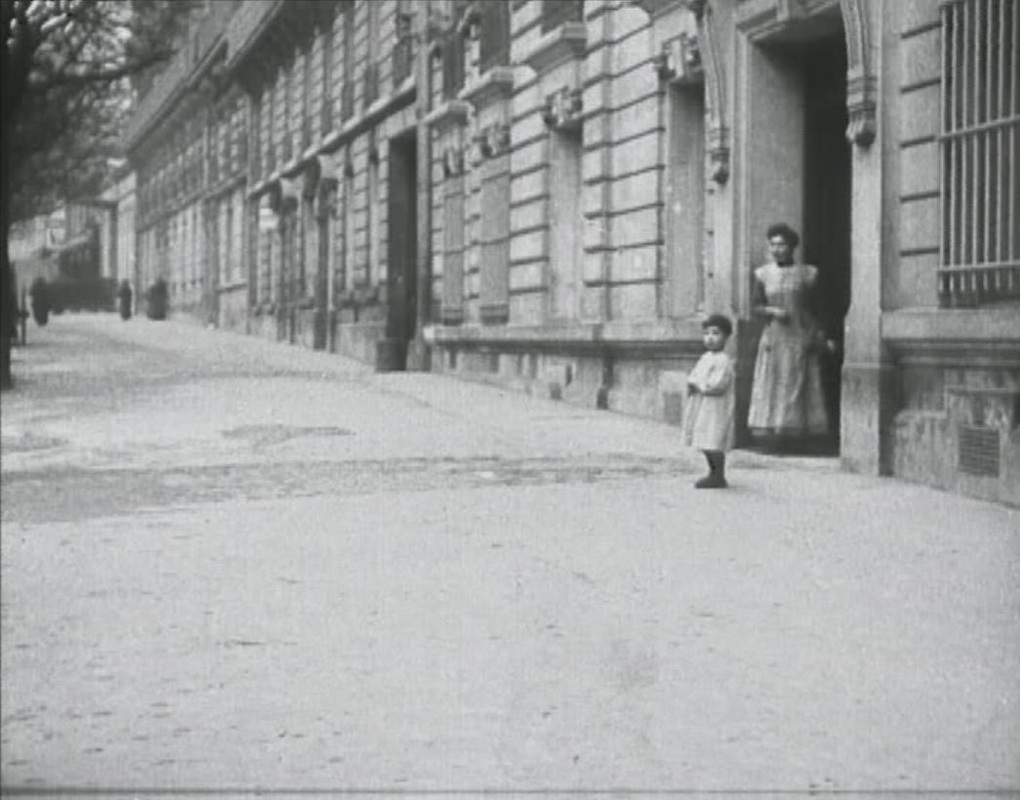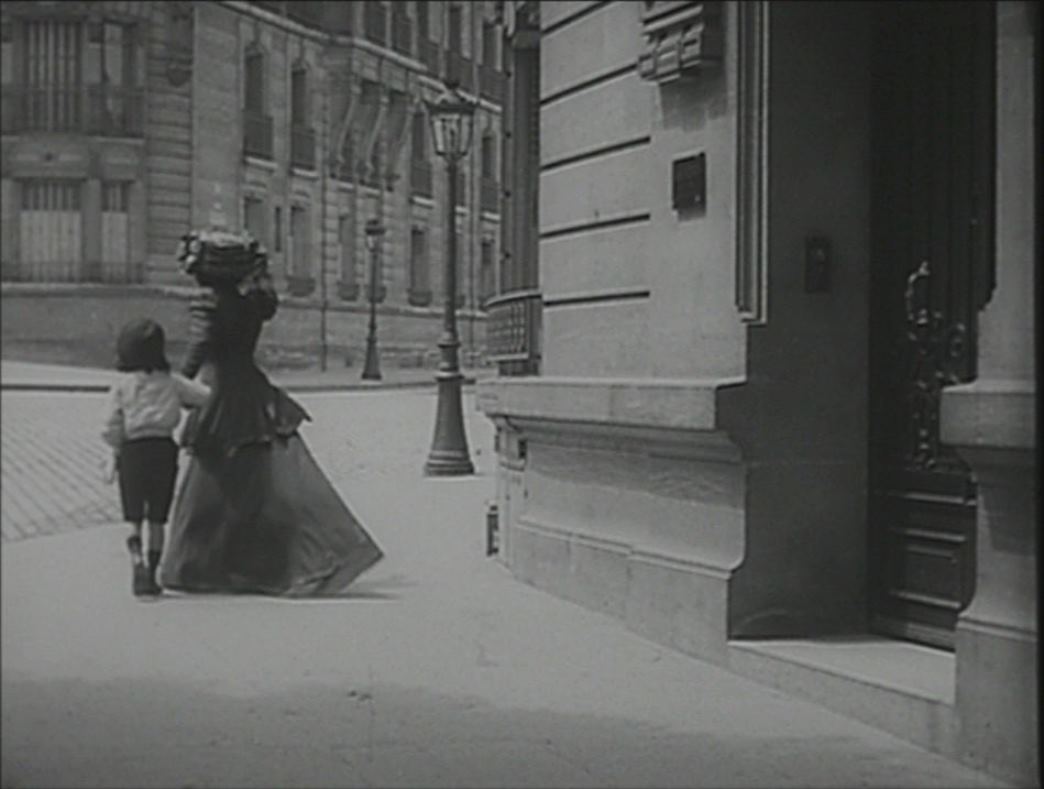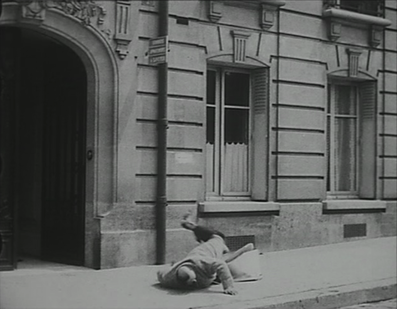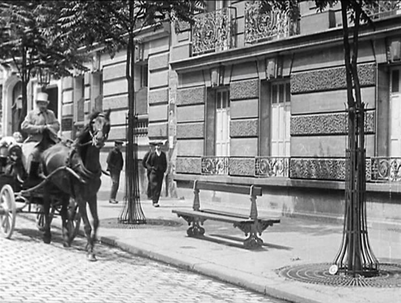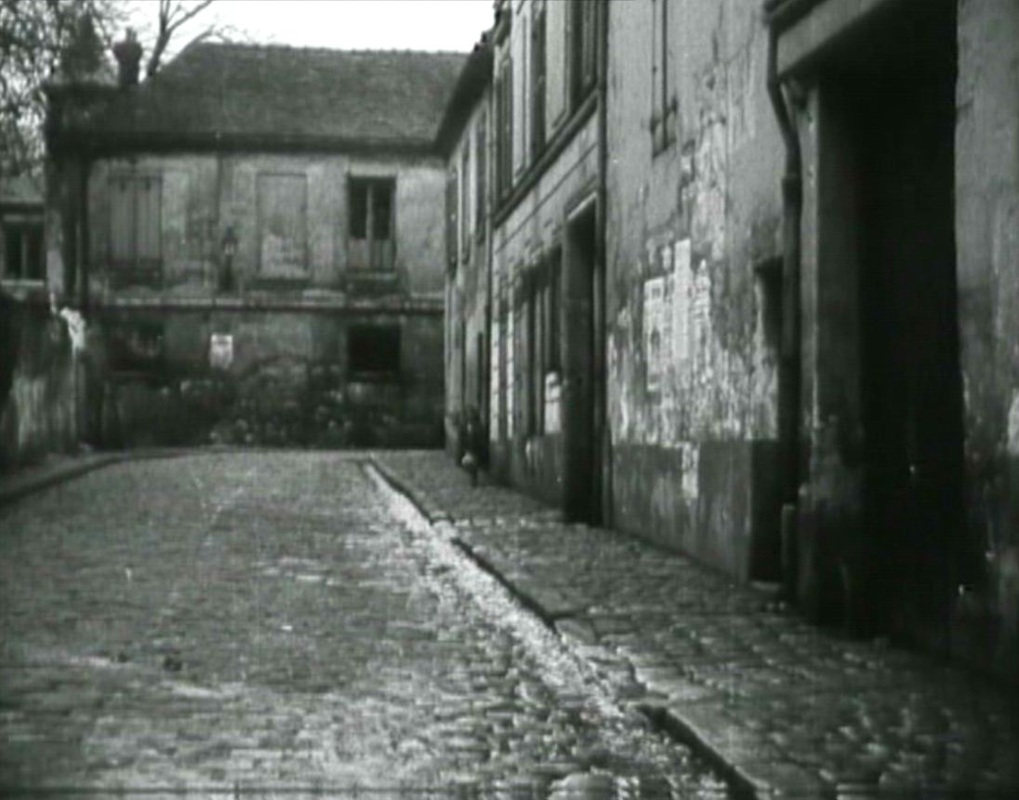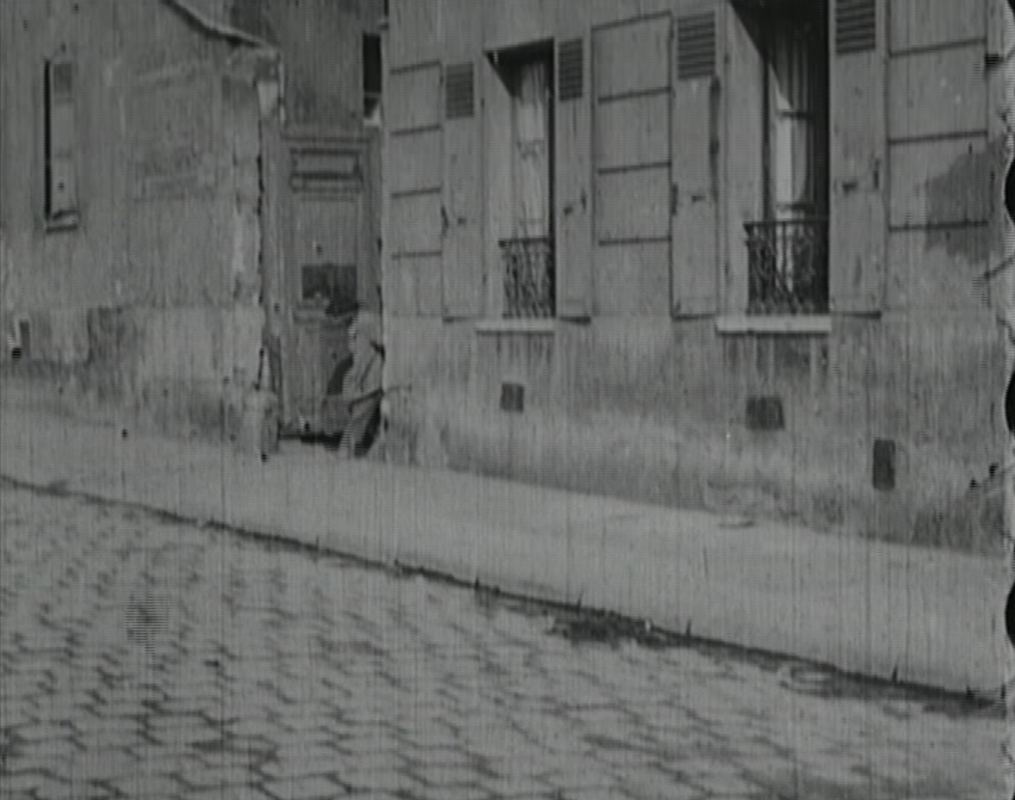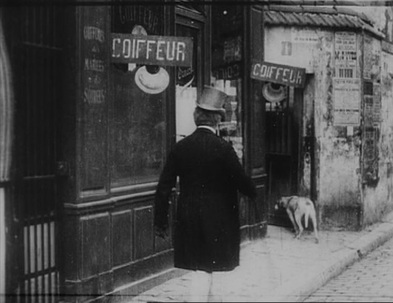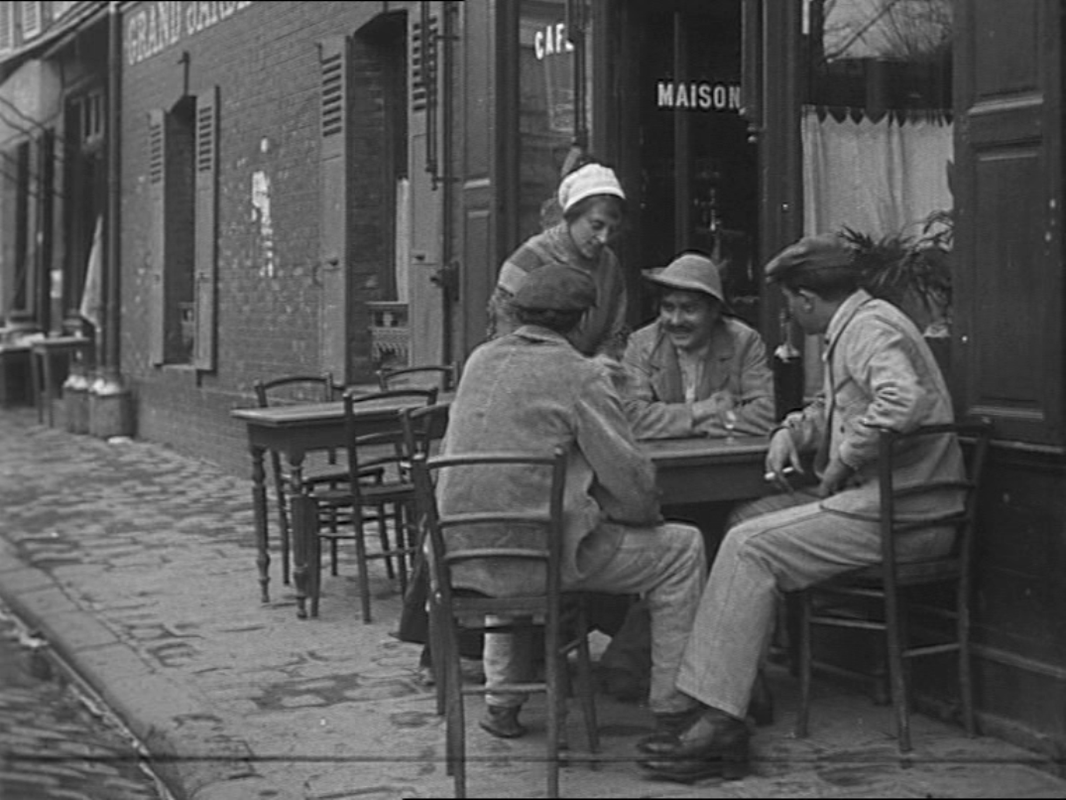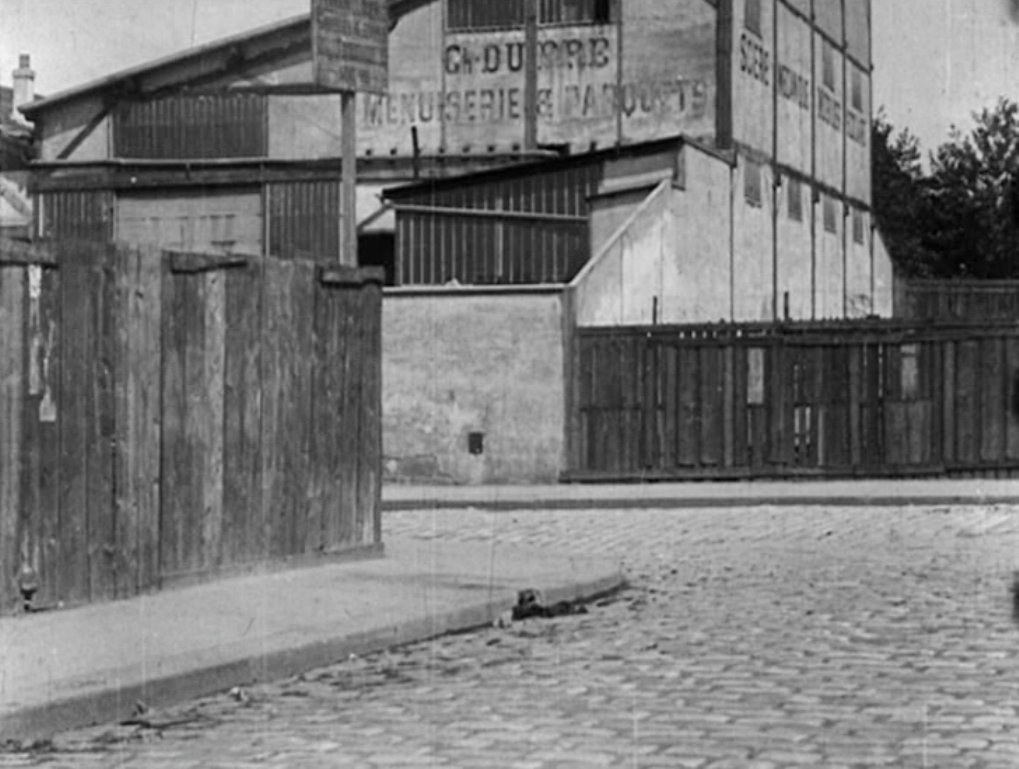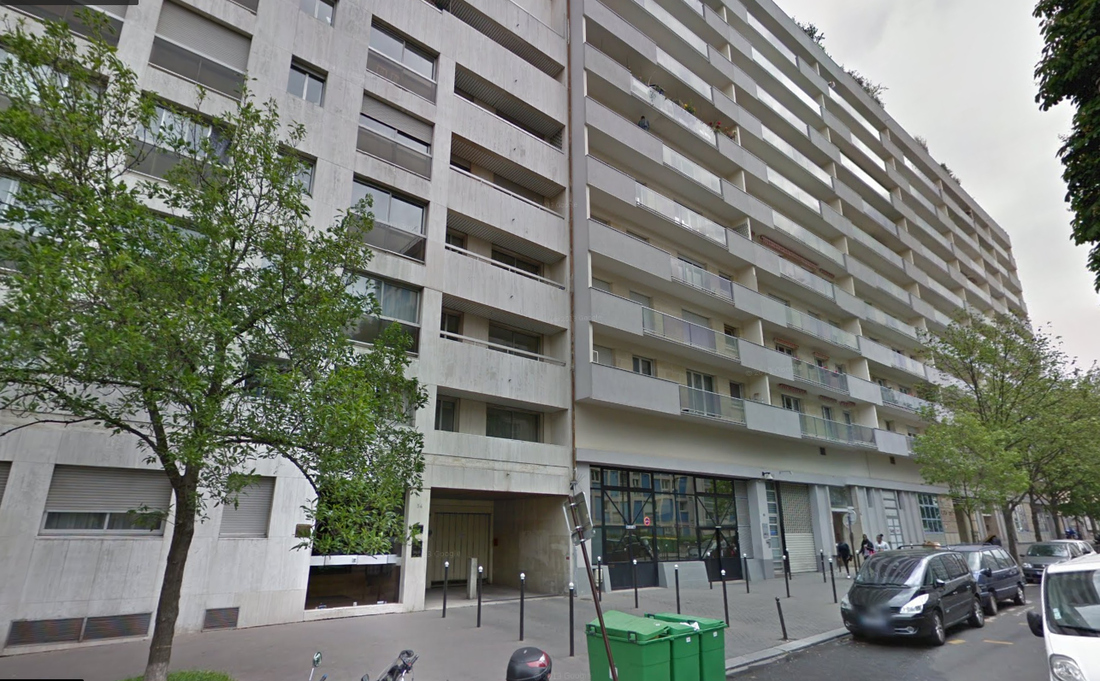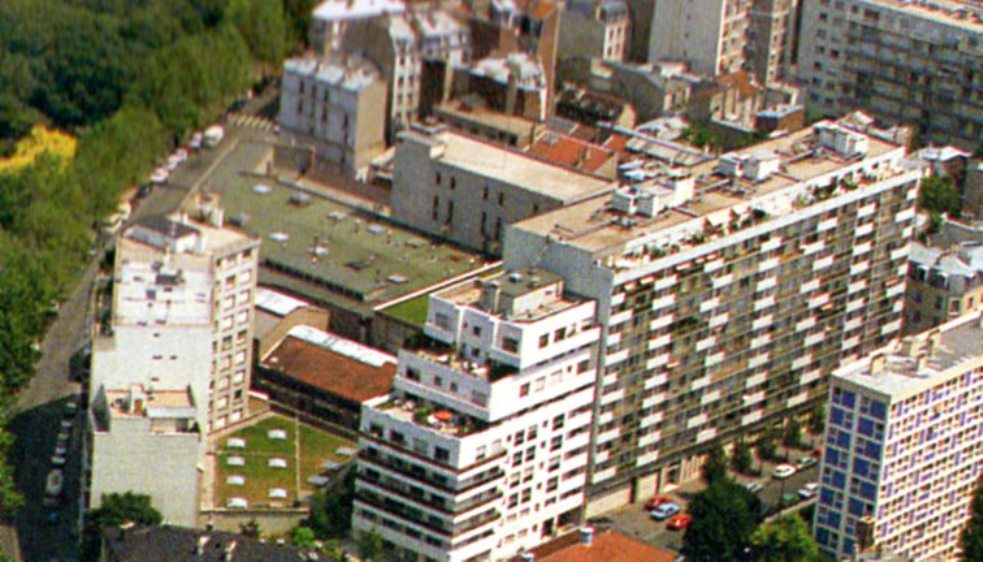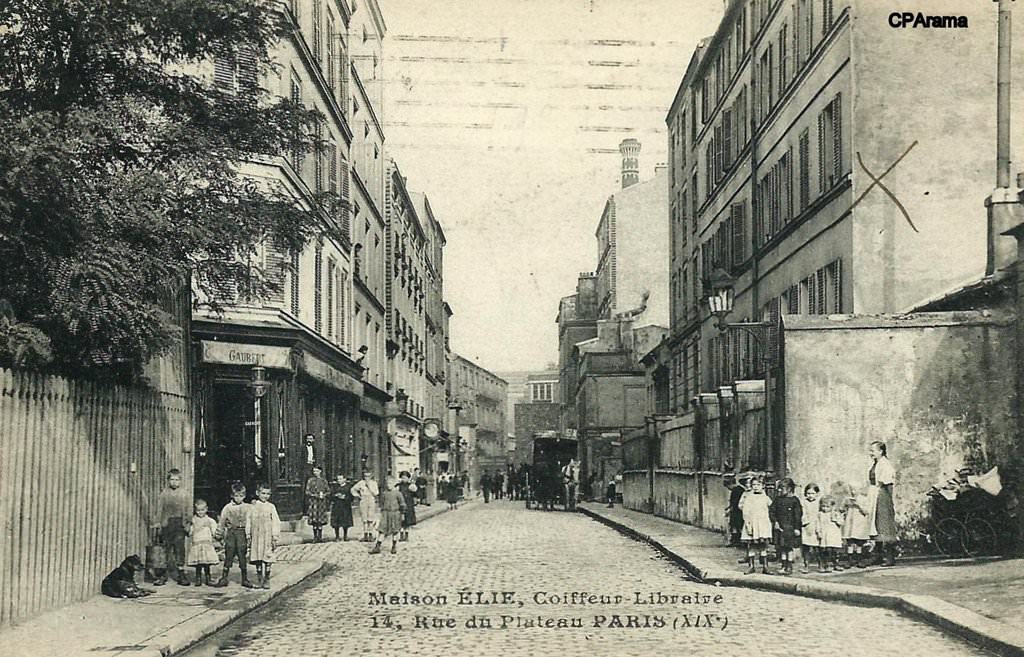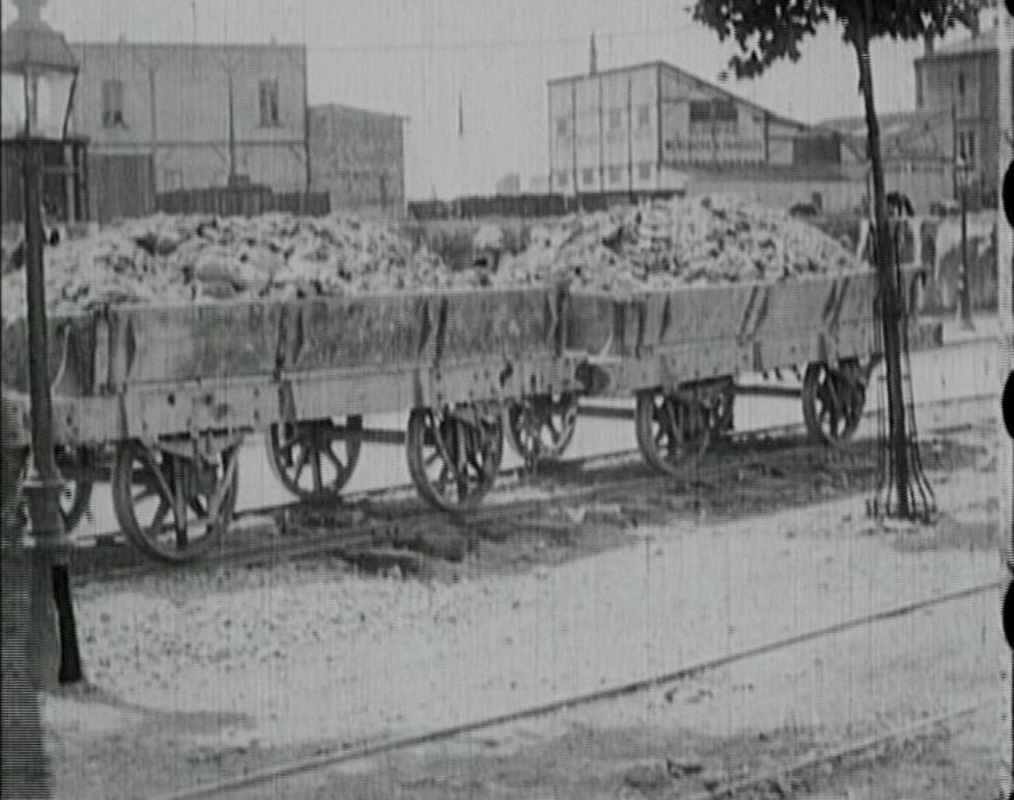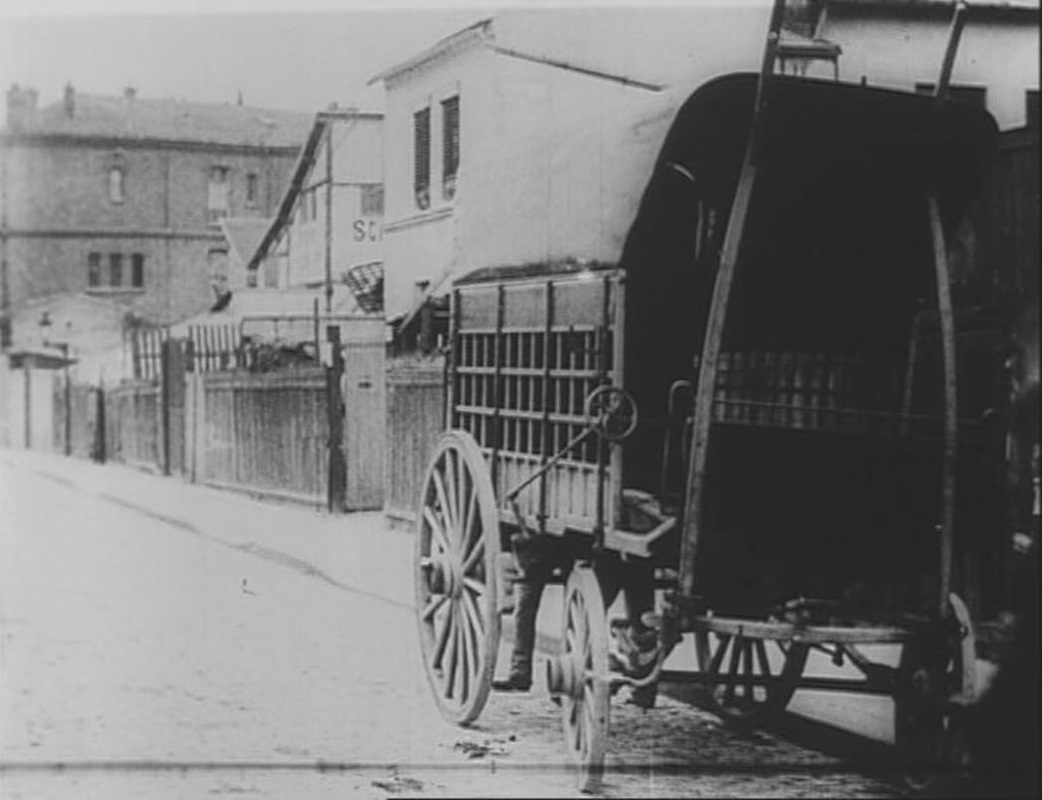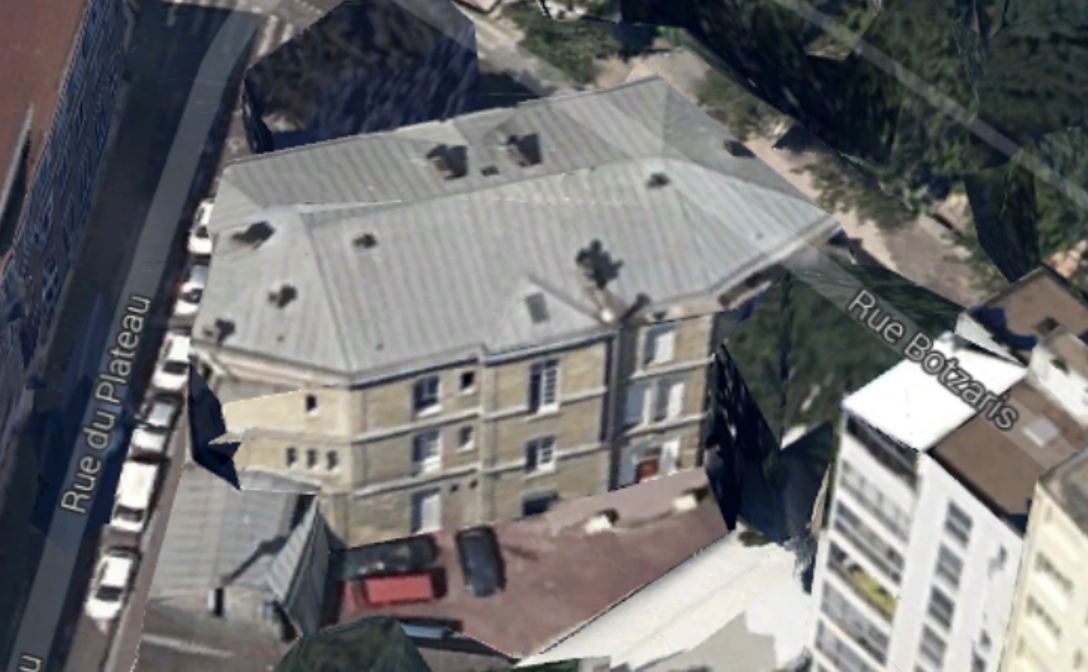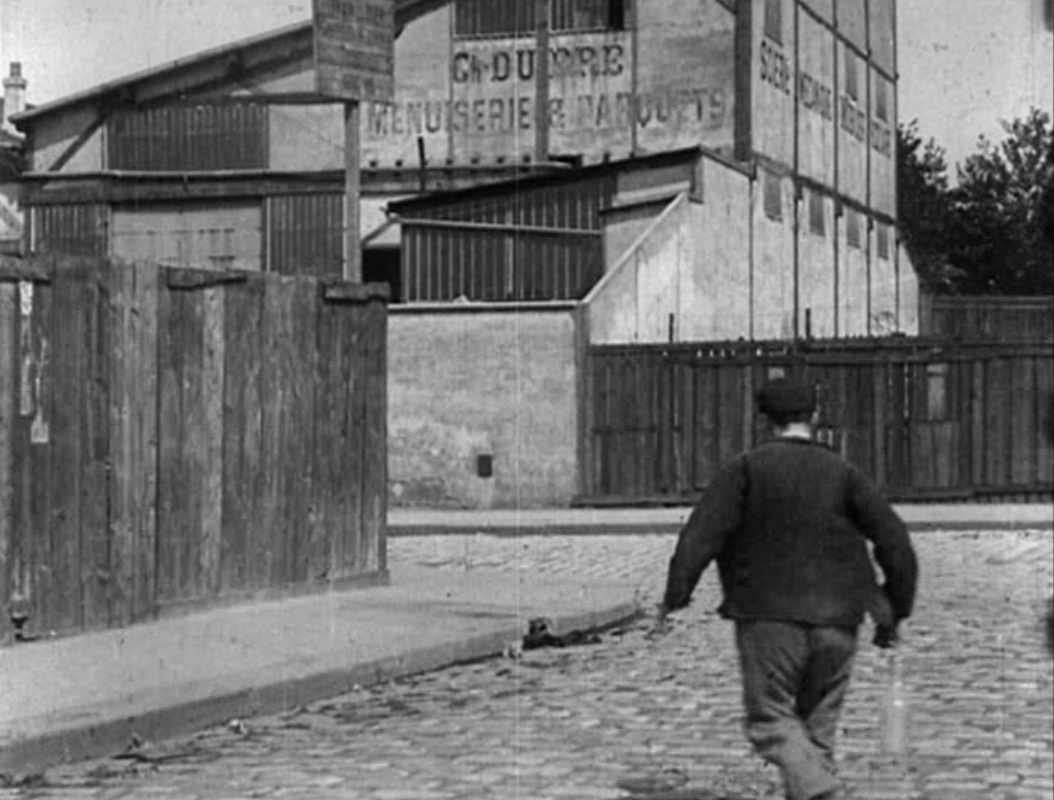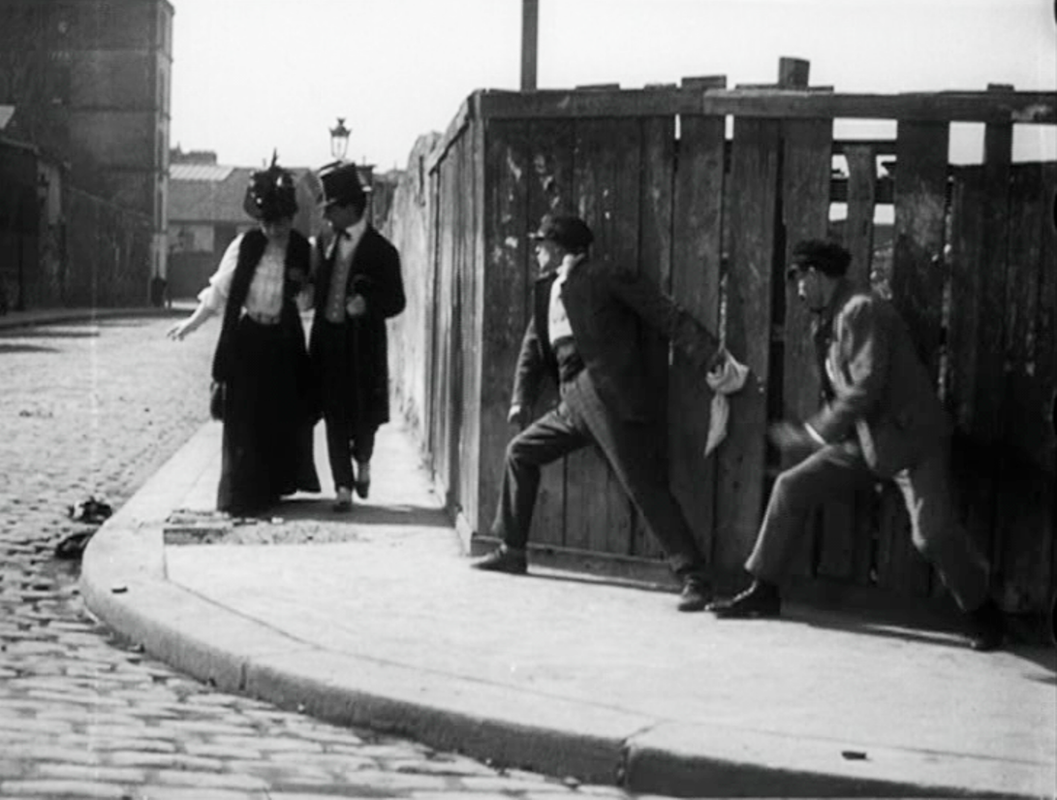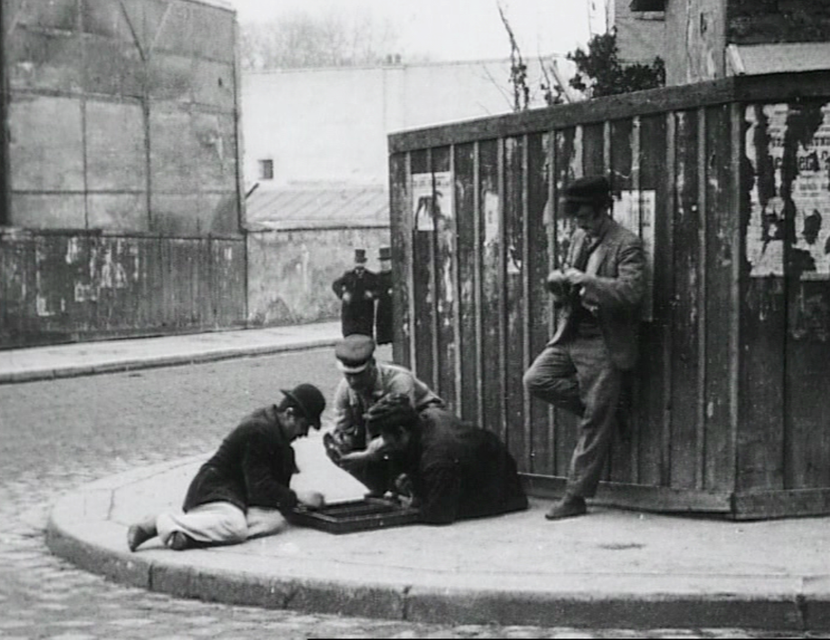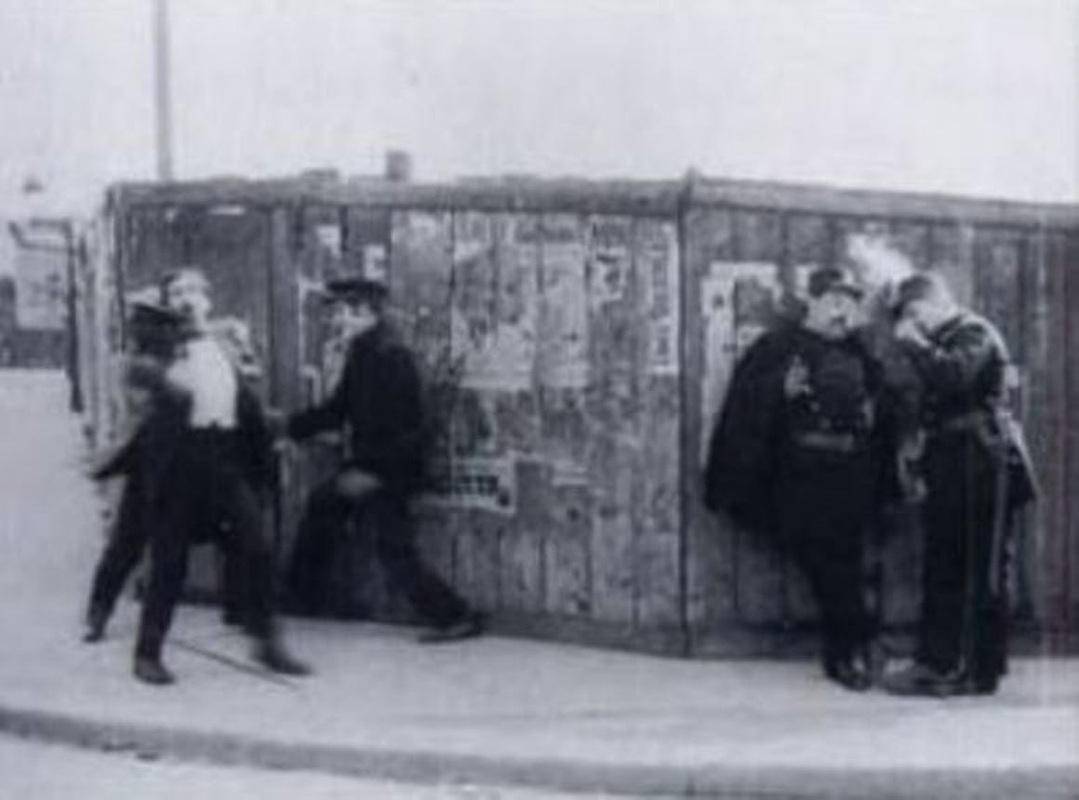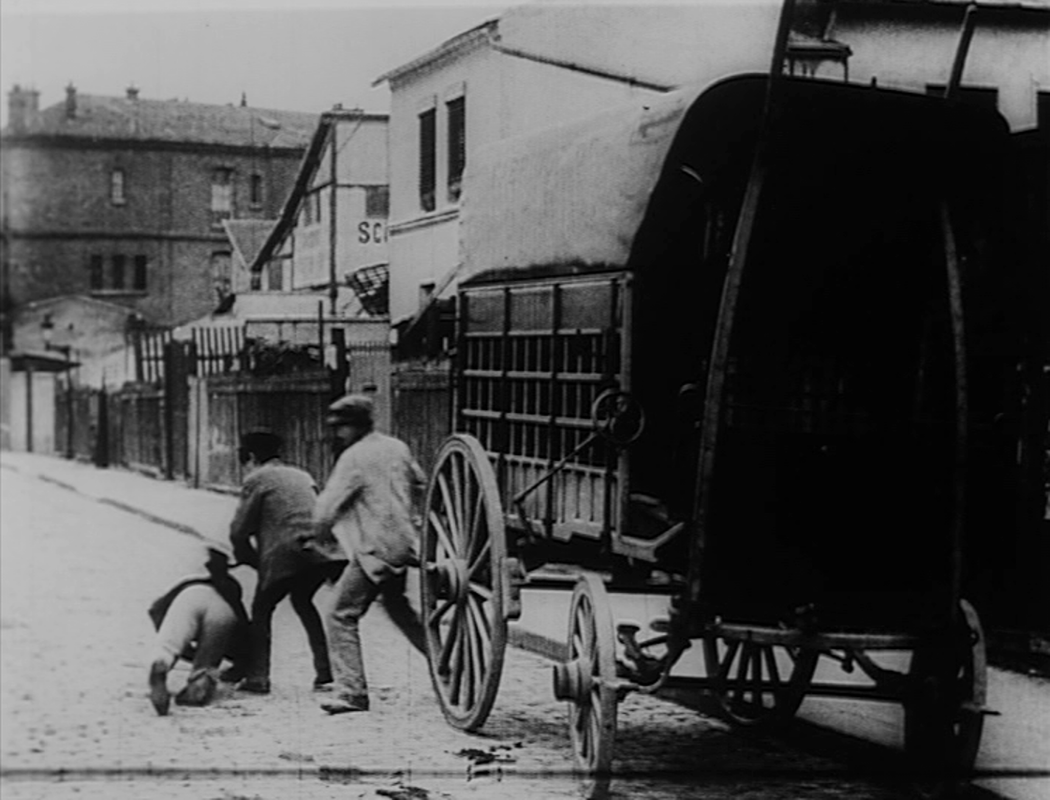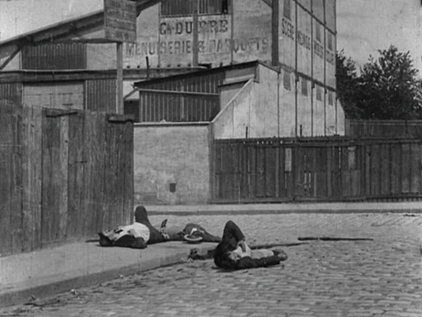
a dangerous street corner:
the rue du Plateau in
Gaumont films c. 1907
the rue du Plateau in
Gaumont films c. 1907
|
The Gaumont factory and studios, the Cité Elgé, were in the block formed by the Réservoir des Buttes Chaumont to the north, the rue de la Villette to the east and the rue des Alouettes to the south and west, though in 1912 the southern part of the rue des Alouettes was renamed the rue Carducci.
[The first version of this post used a map from 1917, but having just obtained one from the year under discussion I have now used that map. As a curiosity I have put below the 1917 map. The most significant differences are the métro line 7 that opened in 1911 and the change of name for the station 'Allemagne'. The Cité Elgé is on the map by 1917, and the undeveloped land in the bottom left-hand corner has become the Folles Buttes, accommodating an amusement park of that name.] |
The immediate environs of the Cité Elgé provided its filmmakers with a great variety of location-types, along a scale from sordidly proletarian to elegantly bourgeois. For the latter, the streets north of the parc des Buttes Chaumont appear frequently, especially the rue Manin:
Their distinctive façades make these buildings easy to identify, especially as they are usually still in place. It is harder to identify the rougher streets we see in Gaumont films because the buildings are less distinctive and are more likely to have been demolished. All of the following could be streets somewhere near the studios, but so far I haven't managed to find any of them:
This post is about a non-descript industrial building in a proletarian milieu that I have managed to find. We can see it here, in Sur la barricade (1907):
The name 'Ch. Dupré' and the words 'menuiserie & parquets' are conveniently legible. A joinery belonging to someone called Dupré is listed in the 1911 Paris-Hachette annuaire complet, address 32 rue du Plateau. Strong documentary evidence of this kind still needs ocular support for an identification to be definite. This is what no. 32 rue du Plateau looks like now:
This eleven-story residential block was built in 1976, replacing various workshops and factories but not, I suspect, Charles Dupré's joinery, which must have gone long before. The history of this street and surrounding area is documented in detail on the wonderful plateauHassard blog (here), including a great deal on the Gaumont studios. Here is a photograph from that site of the rue du Plateau in the 1970s:
Returning to the rue du Plateau in 1907: failing a visual match now, the next best thing is a match with visual evidence from then. Much of the Buttes Chaumont area c. 1907 was documented by postcard photographers, but there appears to be only one postcard showing the rue du Plateau:
This photograph shows the other end of the street, with the rue Hassard to the left, looking towards the Cité Elgé - the top of one of its chimneys can just be seen.
Corroborative visual evidence is to be found not in postcards but in two other Gaumont films from this period. In Le Lit à roulettes (1907), the bed on wheels travels along the rue Botzaris, and in the background we see buildings on the rue du Plateau, including one very like Dupré's joinery:
Corroborative visual evidence is to be found not in postcards but in two other Gaumont films from this period. In Le Lit à roulettes (1907), the bed on wheels travels along the rue Botzaris, and in the background we see buildings on the rue du Plateau, including one very like Dupré's joinery:
In L'Homme aimanté (1907) the protagonist is attacked by apaches on a street that we can confirm is the rue du Plateau because behind Dupré's joinery is a recognisable building (also visible in Le Lit à roulettes):
Now an annexe of the Tunisian embassy, it was built for the Fondation Lebaudy in 1891 as a retirement home for workers in the sugar refining industry (see here). Google Street View doesn't show it very clearly, but we can match those three narrow windows to those we can see here, on Google Earth:
The street with the joinery is clearly, then, the rue du Plateau, and the street up which the boy in Sur la barricade runs to get to the rue du Plateau must be the rue Préault:
This, too, is a street that has left few traces in the visual record of the area c. 1907, but I am tempted to match the wooden-fenced street corner to the left of the shot with another wooden-fenced street corner that appears in Gaumont films, a location that I have been trying to identify for some time:
My identification of this street with the rue Préault is based on the similarity of the wooden fences, the shape of the pavement with a drain in the same place, and the wooden pole just behind the fence in both shots. Clearly that isn't enough to be definite, though I could add that this street corner appears in two other Gaumont films at the time, suggesting that it is very near the Cité Elgé. In each of its three appearances this is a place where apaches lurk:
Given that, in L'Homme aimanté, the rue du Plateau is also populated by apaches, I would like to conclude that the junction of the rue Préault and the rue du Plateau was for Gaumont filmmakers c. 1907 the ideal location for the staging of urban street crime:
I can't say this for certain, since I can't be certain that the street corner in Le Billet de banque, La Grève des apaches and Les Agents tels qu'on nous les représente is actually the rue Préault. I'll keep looking for evidence, and shall update this post if I find it.
Films discussed, all Gaumont productions:
Les Agents tels qu'on nous les représente (Louis Feuillade 1908)
Le Billet de banque (Alice Guy 1907)
La Grève des apaches (Etienne Arnaud 1907)
L'Homme aimanté (Louis Feuillade 1907)
L'Intruse (Louis Feuillade 1913)
Le Lit à roulettes (Alice Guy 1907)
Oscar et Kiki la midinette (Léonce Perret 1914)
Le Pavé de Paris (anon. 1912)
Le Placier est tenace (Emile Cohl 1910)
La Possession de l'enfant (Louis Feuillade 1909)
Sur la barricade (Alice Guy 1907)
Les Agents tels qu'on nous les représente (Louis Feuillade 1908)
Le Billet de banque (Alice Guy 1907)
La Grève des apaches (Etienne Arnaud 1907)
L'Homme aimanté (Louis Feuillade 1907)
L'Intruse (Louis Feuillade 1913)
Le Lit à roulettes (Alice Guy 1907)
Oscar et Kiki la midinette (Léonce Perret 1914)
Le Pavé de Paris (anon. 1912)
Le Placier est tenace (Emile Cohl 1910)
La Possession de l'enfant (Louis Feuillade 1909)
Sur la barricade (Alice Guy 1907)
